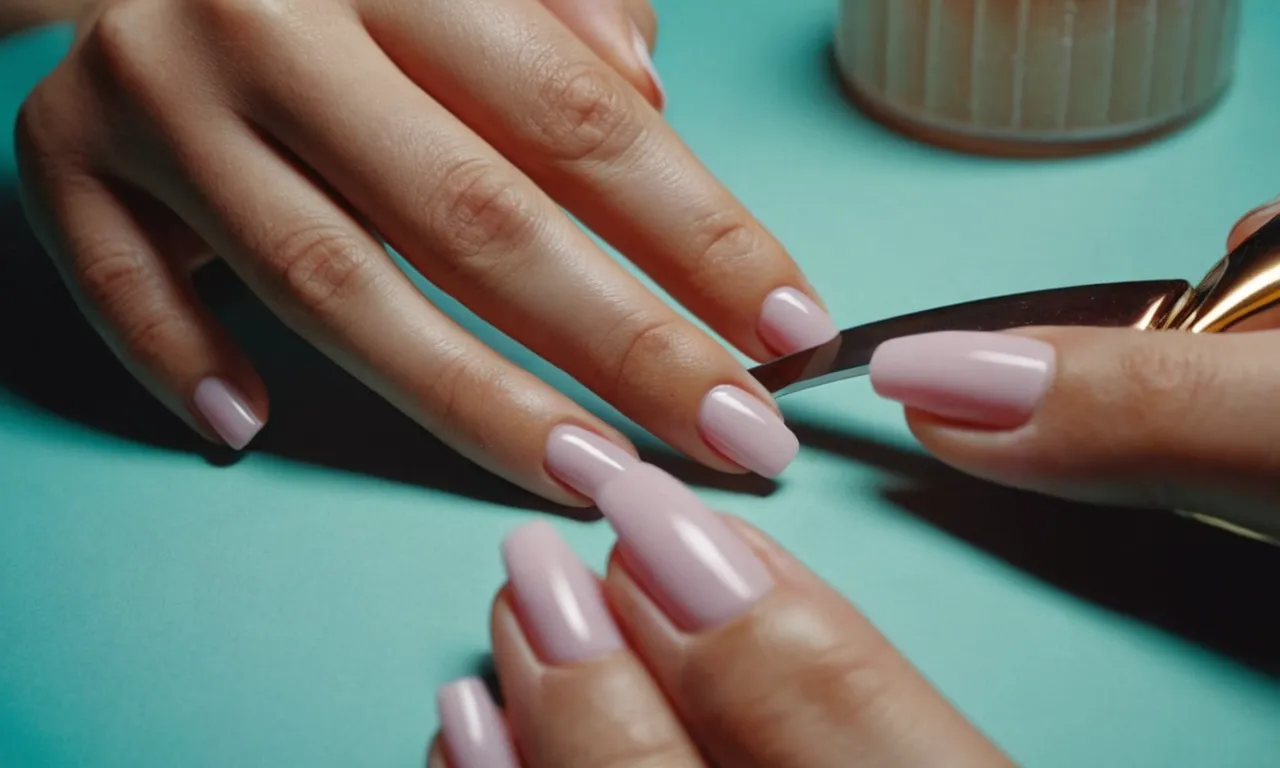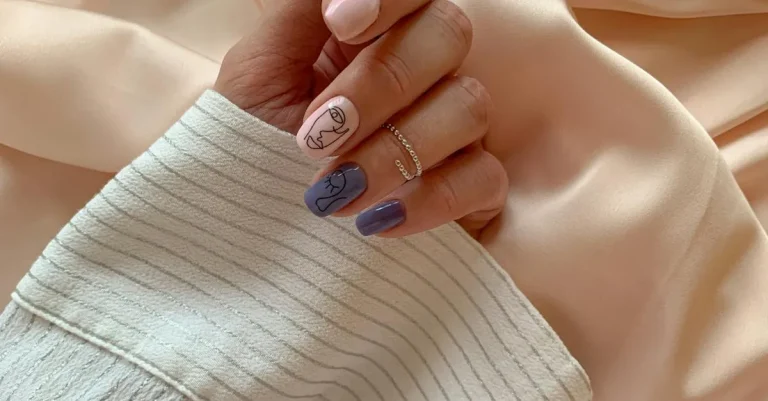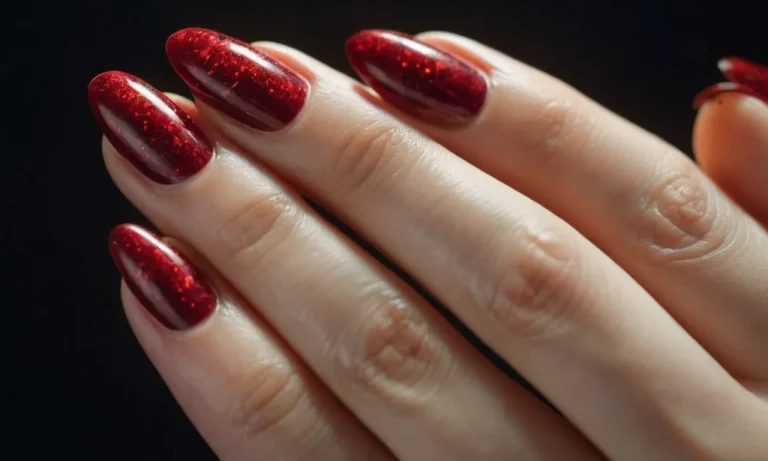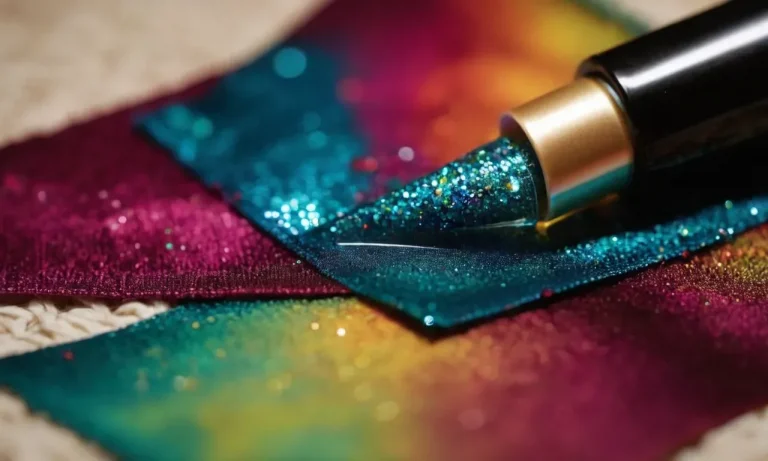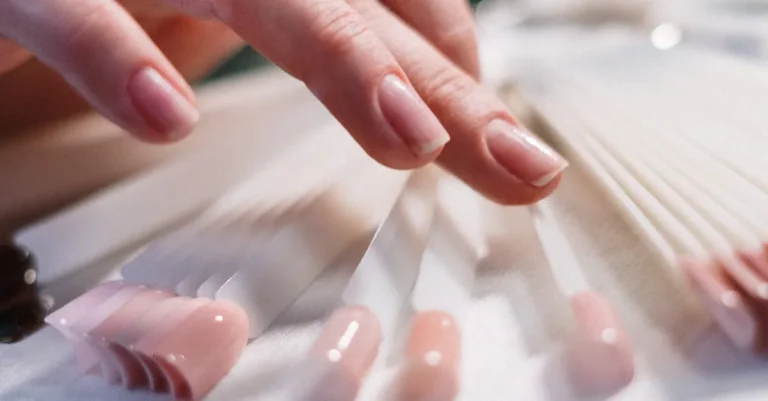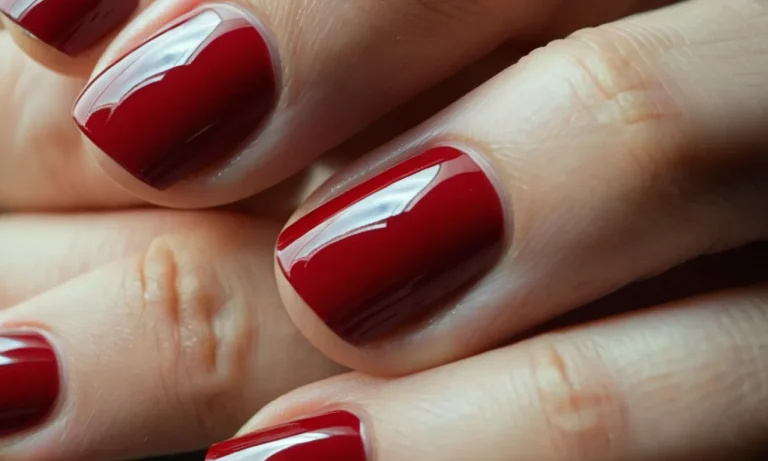Nail Primer Vs Nail Dehydrator: What Goes First?
Getting a perfect gel manicure starts with proper nail prep. But with so many different nail prep products out there, it can get confusing. Should you apply nail primer or nail dehydrator first? Here’s a quick answer: Apply nail dehydrator first, followed by nail primer for the best adhesion and longevity of your manicure.
In this comprehensive guide, we’ll go over the purpose and benefits of nail dehydrators and primers. We’ll explain the science behind why a dehydrator should be used before a primer. We’ll also provide application tips, product recommendations, and frequently asked questions to help you get salon quality nails at home.
What is a Nail Dehydrator?
A nail dehydrator is a liquid solution that is brushed onto natural nails before applying nail enhancements like acrylics or gel polish. Using a dehydrator is an essential prep step that helps the enhancement adhere properly and last longer without lifting or peeling.
Purpose and Benefits
Nail dehydrators work by removing moisture, oils, and residue from the nail plate surface. This cleans and slightly roughs up the keratin surface so there is more texture for nail products to grip onto. Some key reasons to use a dehydrator include:
- Removes debris and dead cuticle cells for enhanced adhesion
- Eliminates moisture and body oils that can cause lifting or peeling
- Creates microscopic scratches that allow product to penetrate deeper
- Quickly dries and preps nails for immediate application
How It Works
Nail dehydrators are an alcohol-based liquid, typically containing ethanol, isopropyl alcohol, and acetone. Some formulations also have additional key ingredients like benzalkonium chloride, which sanitizes, and ethoxydiglycol to prevent over-drying.
When brushed onto the nails and allowed to dry, these solvents dissolve and lift oil, moisture, and debris off the nail plate. As the solvents evaporate they stimulate microscopic scratches and pores in the keratin surface.
This allows the next layer of product, whether acrylic, gel, or polish, to penetrate deeper for superior adhesion.
When to Use
Use a nail dehydrator as the first step of every nail enhancement service. Apply it after filing and shaping the natural nail, and before applying primer, acrylic, gel base coat, or polish. Using a dehydrator helps remove any dust or oil that may have gotten on the nails during the filing process to prep a perfectly clean surface.
A dehydrator is quick and only takes seconds to work. Apply a thin, even layer and wait about 5 seconds for it to flash dry. The nails are ready for the next step when they appear matte instead of shiny.
Be very careful not to touch the nails with your fingers after this point or the oils will transfer back onto the surface.
While a dehydrator is not mandatory for a simple polish manicure or pedicure, it can still help prep the nails for longer wear. Try applying it once a week or every few manicures to deep clean oils and residue off the nail plate.
What is a Nail Primer?
A nail primer is a product applied to natural or artificial nails before the application of nail enhancements such as acrylic, gel polish, or regular nail polish. Using a nail primer helps the manicure last longer by improving adhesion and preventing chipping or peeling.
Purpose and Benefits
The main purposes and benefits of using a nail primer include:
- Removes oils and debris from the nail plate for better product adhesion.
- Creates a tacky surface for nail products to stick to.
- Helps prevent chipping, cracking, and peeling of nail enhancements.
- Allows even application and long-lasting wear.
- Protects natural nails from damage caused by enhancements.
- Fills in ridges on nails for a smooth application.
By prepping the nails with primer first, you can achieve a flawless, chip-free manicure that lasts longer. The primer creates an optimal base for nail products to bond to.
How It Works
Nail primers work through a simple process:
- The primer is brushed or wiped onto clean, dry natural or artificial nails.
- Ingredients like isopropyl alcohol, ethyl acetate, and acetone remove dirt, oil and moisture from the nails.
- Acid ingredients like methacrylic acid gently etch the nail plate to create texture.
- Resins and polymers leave behind a slightly tacky film that nail products can adhere to.
- The nail plate is now prepped for application of enhancements.
This combination of light dehydration, etching, and resin deposition primes the nails for optimal bonding. Using nail primer makes the manicure last longer compared to applying products directly to bare nails.
When to Use
The ideal times to use nail primer are:
- Before applying acrylic nails, gel polish, dip powder, or any enhancement.
- Before painting on regular nail polish for long-wear.
- When redoing a manicure to remove oils from last application.
- If you experience lifting, peeling or chipping of enhancements.
- On natural nails to fill in ridges and even out texture.
- Anytime you need increased adhesion from your nail products.
Using nail primer each time you do your nails will help them look flawless for longer. Most manicures involve using a primer first before any enhancements or polish.
Why Use a Dehydrator Before Primer
Dehydrator Prepares Nails
Applying a dehydrator is a crucial first step when doing your nails. The dehydrator removes excess moisture, oils, and residues from the nail plate, leaving it clean and ready for the primer and polish. This helps the primer and color adhere better for a long-lasting manicure.
Our nails constantly produce oils and moisture from underneath the surface. While this is important to keep the nails flexible and healthy, too much of these substances can prevent proper bonding with nail products.
A dehydrator contains ingredients like alcohol, acetone, or ethyl acetate that work to thoroughly dry out and dehydrate the nails. This removal of moisture and oils allows the primer to penetrate deeper and create a stronger bond.
In addition to removing moisture, dehydrators prep the nails by getting rid of any leftover residue, dust, or oils from previously applied products. This ensures the nail plate is perfectly clean and primed for the primer to grab onto. Skipping this dehydration step can lead to lifting, peeling, or premature wear of the manicure.
Primer Creates Bond
After properly cleansing and dehydrating the nails, a primer can then work its magic. Nail primers contain bonding agents that help adhere the polish to the natural nail plate. Common ingredients in primers are methacrylic acid, HEMA, and polyethyl imine resins.
These agents act like glue between the nail and the polish. The primer fills in any tiny crevices and creates a tacky surface that grips and anchors the polish layers. Using a primer helps prevent chipping, cracking, and other damage by keeping the polish strongly fused to the nails.
Primers may also include minerals that reinforce and harden natural nails. This helps weak, peeling nails hold up better under the stress of polish, gel, and regular wear and tear. An added bonus is that many primers deliver nutrients like calcium, vitamins, and proteins to condition nails and stimulate growth.
Following Correct Order is Key for Adhesion
Putting primer before the dehydrator is one of the most common nail prep mistakes. Applying products in the wrong order negatively affects adhesion and longevity. The primer needs a clean, dry nail surface to properly bond. Oils, moisture, and debris will block its sticking power.
If you put primer on first, the dehydrator will not be able to fully cleanse and prep the nails. The primer will already be adhered to whatever residues remain. This leads to weak bonding, lifting, and premature wear.
Following the correct 1-2 step of dehydrator then primer is vital for a long-lasting, damage-free manicure.
Some women skip the primer thinking the polish will adhere fine to bare nails. However, nail polish alone does not have the same bonding strength as primer. For best results, take the time to properly dehydrate nails and apply a primer before painting. This keeps polish locked onto nails for up to two weeks without cracking, peeling or chipping.
How to Apply Dehydrator and Primer
Step-By-Step Instructions
Applying nail dehydrator and primer properly is crucial for getting a long-lasting manicure. Here are the key steps:
- Start with clean, dry nails. Remove any existing nail polish and use a nail file to shape your nails.
- Apply the nail dehydrator. This removes oils and moisture from the nail plate so the base coat and polish can adhere better. Apply a thin, even layer to each nail and let it dry for 60 seconds.
- Next, apply the nail primer. This further preps the nail and creates a tacky surface for polished to grab onto. Again, use a thin even layer on each nail and allow to dry for 60 seconds before moving to the next step.
- Finish with your base coat, nail polish layers, and top coat as usual. The dehydrator and primer will help them stick to your nails better.
Tips for Proper Application
To get the most out of your dehydrator and primer products, keep these application tips in mind:
- Shake bottles before use to mix contents. Primer especially can settle.
- Use thin coats and let dry between steps. Thick globby layers won’t dry properly.
- Don’t skip either step! Both remoisturize and prime the nails for polish.
- Apply to bare, filled nails. Don’t use on top of an existing manicure.
- Reapply once a week for long-lasting color. Nails regenerate quickly.
- Store tightly sealed and away from light to preserve efficacy.
Following this nail dehydrator and primer prep will help your manicure last for up to three weeks with minimal tip wear or peeling!
The Best Dehydrator and Primer Products
Our Top Picks
When it comes to the best nail dehydrator and primer products, there are a few standout options to consider. Here are some of our top recommendations:
- CND SolarOil Nail and Cuticle Dehydrator – This popular salon-quality option helps remove excess oil and moisture from the nail plate for longer lasting manicures. It contains isopropyl alcohol to thoroughly cleanse nails.
- ORLY Bonder Base Coat – This top-rated primer creates a tacky surface on nails so polish adheres better. It helps prevent chipping, peeling and staining. It’s free of the toxic ingredients found in many traditional nail polishes.
- Essie Apricot Cuticle Oil – This nourishing oil softens and hydrates dry, cracked cuticles before polishing. The apricot kernel oil formula moisturizes without leaving hands feeling greasy.
- OPI Natural Nail Base Coat – This base coat nourishes nails with vitamin E and keratin protein. It helps condition nails and encourage healthy growth underneath polish. The natural formula is free of common allergens.
- Sally Hansen Maximum Growth Base and Top Coat – This drugstore find contains nylon fibers to reinforce weak, brittle nails prone to splits and breaks. Biotin, vitamin E and bamboo extract work together to stimulate thicker, stronger nail growth.
These top-rated products provide either dehydrating or priming benefits to prep nails for a flawless, long-lasting manicure. Most are available at drugstores, beauty supply retailers or professional salons.
What to Look for When Buying
When shopping for a nail dehydrator or primer, keep the following features in mind:
- Ingredients – Look for formulas with nail-healthy ingredients like vitamin E, keratin, biotin or botanical oils. Avoid harmful chemicals like formaldehyde, toluene, phthalates and parabens.
- Your nail type – Choose oil-removing dehydrators for oily nail beds or softening cuticle oils for dry, brittle nails. Opt for reinforcement base coats if your nails are weak and peel easily.
- Ease of use – Seek dehydrators that dry quickly without sticky residue. Look for primer brushes that glide smoothly without clumping for neat application.
- Value for money – Compare quantities and price points. Larger bottles often provide better value for regular manicures. Sets can also help save money.
- Brand reputation – Stick to reputable professional brands like OPI and Essie or dermatologist-tested drugstore options for quality you can trust.
- Reviews – Check reviews on sites like Ulta, Sephora or Amazon for real user experiences.
Taking the time to find the right dehydrator and primer for your nail care routine is essential for creating a smooth, even canvas before polish application. Investing in salon-quality products can help take your at-home manicures to the next level.
FAQs
Do I really need both a dehydrator and primer?
Using both a nail dehydrator and a primer is highly recommended for long-lasting manicures. The dehydrator removes oils from the nail plate, allowing the primer to better adhere. Skipping either step can shorten the wear time of your manicure.
Nail dehydrators use ingredients like acetone, alcohol, or ethyl acetate to thoroughly dry out the nails. This prepares them for polish application by removing residue. Primers then create a tacky layer that grips polish. Using a dehydrator without a primer may allow bubbles and chips to form faster.
Using only a primer won’t remove oils that prevent good polish adhesion.
Can I just use acetone instead of a dehydrator?
You can use acetone in place of a dedicated nail dehydrator, but it may be harsher on the nails. 100% acetone is very effective at removing moisture, but it can also dry out the nails and skin. Commercial nail dehydrators contain gentler ingredients like ethyl acetate so they thoroughly clean nails without over-drying.
If using acetone, limit contact to 30 seconds per nail to avoid excessive dryness. Always apply cuticle oil afterward too. For best results, look for a nail dehydrator containing gentler ingredients that won’t compromise nail health.
How long do I need to wait between products?
It’s best to wait 60 seconds after using a nail dehydrator before applying primer. This gives the ingredients time to evaporate while still leaving nails free of debris and oil. After 60 seconds, swipe on your preferred nail primer according to package directions.
Most primers only need about 60-90 seconds to get tacky before polish application. Be careful not to wait too long after priming or the tackiness will start to disappear. Pay attention to the waiting times advised on both your nail dehydrator and primer for ideal results.
Conclusion
Using a nail dehydrator followed by nail primer is essential to long lasting, chip resistant nails. The dehydrator thoroughly cleans and preps nails while the primer increases adhesion. Be sure to allow each product ample time to work before moving onto the next step.
With the right prep, you’ll have a gel manicure that lasts for weeks without lifting or chipping.
Did you find this guide helpful? Let us know if you have any other nail prep questions in the comments!

